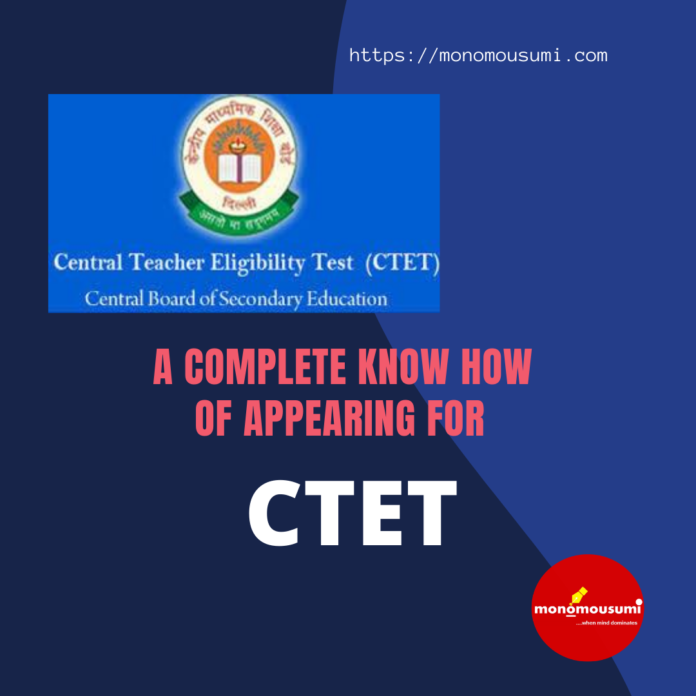“Teaching is the essential profession, the one that makes all other professions possible”.
– David HaselKorn
Parents are the first teachers for their children but in a school, a teacher is a sentinel managing a number of vulnerable humans with different personalities and learning styles. If the school is the second home for a child then a teacher is more than a guardian to the students. Even though teaching is a profession that illuminates the path for other professions still it is the one most underrated vocation.
Anyone can teach, even people who are illiterate can impart knowledge. But we need to understand the fact that knowledge can be bestowed by anyone but education is imparted by teachers. If someone has the flair for teaching he or she must undergo a lot of stages to become a trained, professional teacher who understands the psychology of the students.
Being a teacher of one of the schools controlled by the Central government is a matter of immense pride and comes with many perks. As a first step for entering these schools as a teacher the candidate first needs to clear an entrance exam known as the Central Teacher Eligibility Test, its acronym being CTET. This entrance test is the first step towards the doorway of stepping into prominent central government-controlled school systems as a teacher.
There are many reputed schools and colleges in India but two of the most major central government-controlled school systems are the Kendriya Vidyalaya, and Jawahar Navodaya Vidyalaya. Candidates who qualify CTET can also apply in Central Tibetan Schools, and schools under the administrative control of Union territories of Chandigarh, Dadra & Nagar Haveli, Daman & Diu, Andaman & Nicobar Islands, and Lakshadweep and also in the NCT of Delhi. Today many private institutions also demand teachers who are CTET qualified hence the importance of this examination increases manifolds for all the aspiring teachers.

Following the RTE Act, the National Council for Teacher Education (NCTE) decided that for a person to be eligible for appointment as a teacher for class I to VIII he/she should pass the Teacher Eligibility Test (TET) which is conducted in accordance with the Guidelines framed by the NCTE. This was deemed necessary to bring about national standards and benchmark of teacher quality in the recruitment process and to send a positive signal to all stakeholders that the Government lays special emphasis on teacher quality.
The Ministry of Human Resource Development, Govt. of India then entrusted the task of conducting the Central Teacher Eligibility Test (CTET) to the Central Board of Secondary Education (CBSE), Delhi.
ELIGIBILITYFOR APPEARING IN CTET
Qualifications for becoming Teacher for Classes I-V
- If a person has passed or is appearing in the final year of 2-year Diploma in Elementary Education or has passed or appearing in the final year of 4- year Bachelor of Elementary Education (B.EI.Ed) then they need a score of at least 50 percent in their Senior Secondary (or its equivalent)
- Students who are enrolled in a program for Bachelor of Education (B.Ed), they would additionally require at least 50% marks in their graduation to be eligible to apply for CTET
Qualifications for becoming Teacher for Classes VI-VIII
- For being eligible for this stage, a person needs to be a graduate at the very least.
A person who has passed or appearing in the final year of 2-year Diploma in Elementary Education with a graduation degree is eligible
OR
- Passed or appearing in the final year of 4- year Bachelor in Elementary Education (B.EI.Ed) with at least 50% marks in Senior Secondary (or its equivalent)
OR
- Passed or appearing in the final year of 4- year integrated course of B.A or B.Sc. including B.Ed. with at least 50% marks in Senior Secondary (or its equivalent)
OR
- Passed or appearing in 1-year B.Ed. (Special Education)* with at least 50% marks in graduation
OR
- A candidate who has qualified B.Ed. recognized by the NCTE with at least 50% marks in graduation can appear in TET/CTET.
A relaxation of 5 percent of marks in the eligibility criteria is allowed to the candidates belonging to reserved categories and to the differently able.
STRUCTURE AND CONTENT
All questions in CTET are Multiple Choice Questions (MCQs), with four alternatives out of which one answer is the most appropriate. Each question carries one mark and there is no negative marking for this examination. The papers are of the duration of Two-and-a-half hours each.
There are two papers of CTET
(i) Paper I who intend to be a teacher for classes I to V.
(ii) Paper-II is for candidates who intend to be a teacher for classes VI to VIII.
A person who aims to be eligible for both levels needs to appear in both the papers
Structure and Content for Paper I (for Classes I to V)
All the questions provided in the question paper are compulsory in nature and every question is of one mark each. Since the paper is of 150 marks hence the total number of questions also equals 150. The questions are divided into categories as follows:
Child Development and Pedagogy
Language I (compulsory)
Language II (compulsory)
Mathematics
Environmental Studies
The choice of the languages is asked while filling the application form
Nature and standard of questions:
The questions on child development and pedagogy focus on educational psychology of teaching and learning relevant to the age group of 6-11 years. They mostly focus on understanding the traits and needs of various learners, interaction with them, and the characteristics and qualities of a good facilitator of learning.
The questions slated for Language I focus on the proficiencies related to the medium of instruction and for Language II the focus is on the elements of language, communication, and comprehension abilities.
The Test items in Mathematics and Environmental Studies mostly focus on the concepts, problem-solving aptitude, and pedagogical knowledge and applications of the subjects. In the subject areas, the questions cover the syllabus of that subject prescribed for class I to V by the NCERT.
The questions in Paper-I are thoroughly based on the topics prescribed in the syllabus of the NCERT for classes I – V but their difficulty standard, as well as linkages, could be up to the Secondary stage.
Structure and Content for Paper II (for Classes VI to VIII):
All the questions provided in the question paper are compulsory in nature though there is an option between the questions for the science stream and those for the social science stream and every question is of one mark each. Since the paper is of 150 marks hence the total number of questions to be attempted also equals 150. The questions are divided into categories as follows:
30 MCQs each related to:
Child Development & Pedagogy
Language I
Language II
60 MCQs each related to:
Either, Mathematics and Science (For Mathematics and Science teacher)
Or Social Studies/Social Science (For Social Studies/Social Science teacher)
Nature and standard of questions:
The test items on Child Development and Pedagogy for this paper focuses on educational psychology that aids in teaching and learning with reference to the age group of 11-14 years.
The pattern for Language I and Language II is similar to the first paper only the difficulty level is a bit higher as compared to paper I
The Test items in Mathematics and Science or Social Studies mainly focus on the theories, problem-solving abilities, and pedagogical understanding and functions of the subjects. In the subject areas, the questions cover the syllabus of that subject prescribed for class VI to VIII by the NCERT.
The questions in Paper-II are thoroughly based on the topics prescribed in the syllabus of the NCERT for classes VI-VIII but their difficulty standard, as well as linkages, could be up to the Secondary stage.
QUALIFYING MARKS AND AWARD OF CTET CERTIFICATE
As per the notification of NCTE, a person who scores 60% or more in the TET exam is considered as TET pass. This implies that a person who scores 90 marks or above in their CTET is considered CTET qualified. Although relaxations are provided to the reserved category and for them, the pass percentage is 55 percent i.e. 82 marks out of 150. The qualifying certificate for the respective candidates is then uploaded on Digilocker and is digitally verified. Once a candidate qualifies CTET, they become eligible to apply for recruitment as teachers in many centrally governed schools, as and when vacancies are available.
APPLICABILITY
According to CBSE Affiliation Bye-Laws, from 6th March 2012, it has become mandatory then onwards that a person needs to qualify the Central Teacher Eligibility Test or Teacher Eligibility Test (TET) to be able to teach classes I to VIII in the Schools affiliated to the CBSE. Furthermore, CTET not only applies to schools of the Central Government, Union Territories of Chandigarh, Dadra & Nagar Haveli, Daman & Diu and Andaman & Nicobar Islands, Lakshadweep and NCT of Delhi but it may also apply to the unaided private schools, who may exercise the option of considering the CTET, moreover, any State Government which decides not to conduct the State TET can also consider the CTET as a litmus test for eligible teachers.
VALIDITY PERIOD
The qualifying certificate of CTET for an appointment as a teacher is valid up to seven years from the date of declaration of its result, and it is important to note that there is no restriction as to how many attempts a person makes for acquiring a CTET Certificate. A candidate who already qualified CTET can also appear again for improving their score.
SOME ANECDOTES
A person planning to qualify CTET needs to be thoroughly aware of a few things that might come in handy while preparing for the same. People may get complacent looking at the pattern and syllabus of the paper but it should be noted that for the CTET December 2019 paper the pass percentage for paper 1 was a mere 17.5% and for paper 2 it was 29.73% hence the candidates should focus thoroughly on the requirements to crack the paper.
CBSE conducts this exam twice a year i.e. in the month of July and another in the month of December hence candidates get ample chances to qualify the test.
An eagle-eyed focus on Pedagogy is needed to crack this Eligibility Test. The questions that deal with Languages, Mathematics, Science, or Social Studies also requires an ample amount of pedagogical knowledge. If a student has completed his teacher’s training course then they would be well-versed with Pedagogy and psychology of education.
Another thing worthy of note is that students who pursue their graduation from the field of Commerce will not benefit while appearing for Paper-II because even if they qualify they won’t be able to apply for a post in KVs or JNVs since these subjects are introduced only after class 9th
Although the qualifying certificate might be useful in many private institutions across the country as qualifying the test throws a positive light on your caliber.
CONCLUSION
Before approaching any examination it’s important to analyze and research that particular exam. Since teaching is an honorable profession where a huge number of students aspire to enter, it’s important to know about the path ahead and how to navigate it. CTET is an important exam that takes the candidates one step closure to their dream of becoming a teacher hence background knowledge of the test is mandatory. Moreover, a thorough perusal of previous years’ question papers helps a lot in the preparation.
By Mobani Biswas, Prayagraj
















